Who doesn't dream of A delicious cheese fondue Now that the cold has arrived? Quintessential recipe from Switzerland , its excellent quality raw material has earned it a position of reference throughout the world. And since traveling with the palate is always a delight, we flew to the Swiss country with the cheese as an excuse to discover the magic that awaits in the regions where it is made the Jura, the Emmental and, of course, the Gruyère.
More than 700 types of cheese are produced in Swiss , but in addition to being a paradise for dairy lovers, its high mountains, green meadows, crystal clear lakes, dreamlike towns and cities make this corner of Europe a treat for all the senses. This route revolves around four big names Swiss cheeses , all of them traditional, 100% natural, artisans , and made with the best raw material from the Swiss valleys and mountains.
GRUYÈRES: IN THE HEART OF THE FRIBURG PRE-ALPS
The most iconic cheese without holes, Le Gruyère AOP , has the same name as one of the most beautiful villages in Switzerland. It is no accident, of course. The journey begins in Gruyères, epicenter of creation of this delicacy in the middle of the Friborg pre-Alps , and no, it does not owe its name to the cheese, but to the nobility.
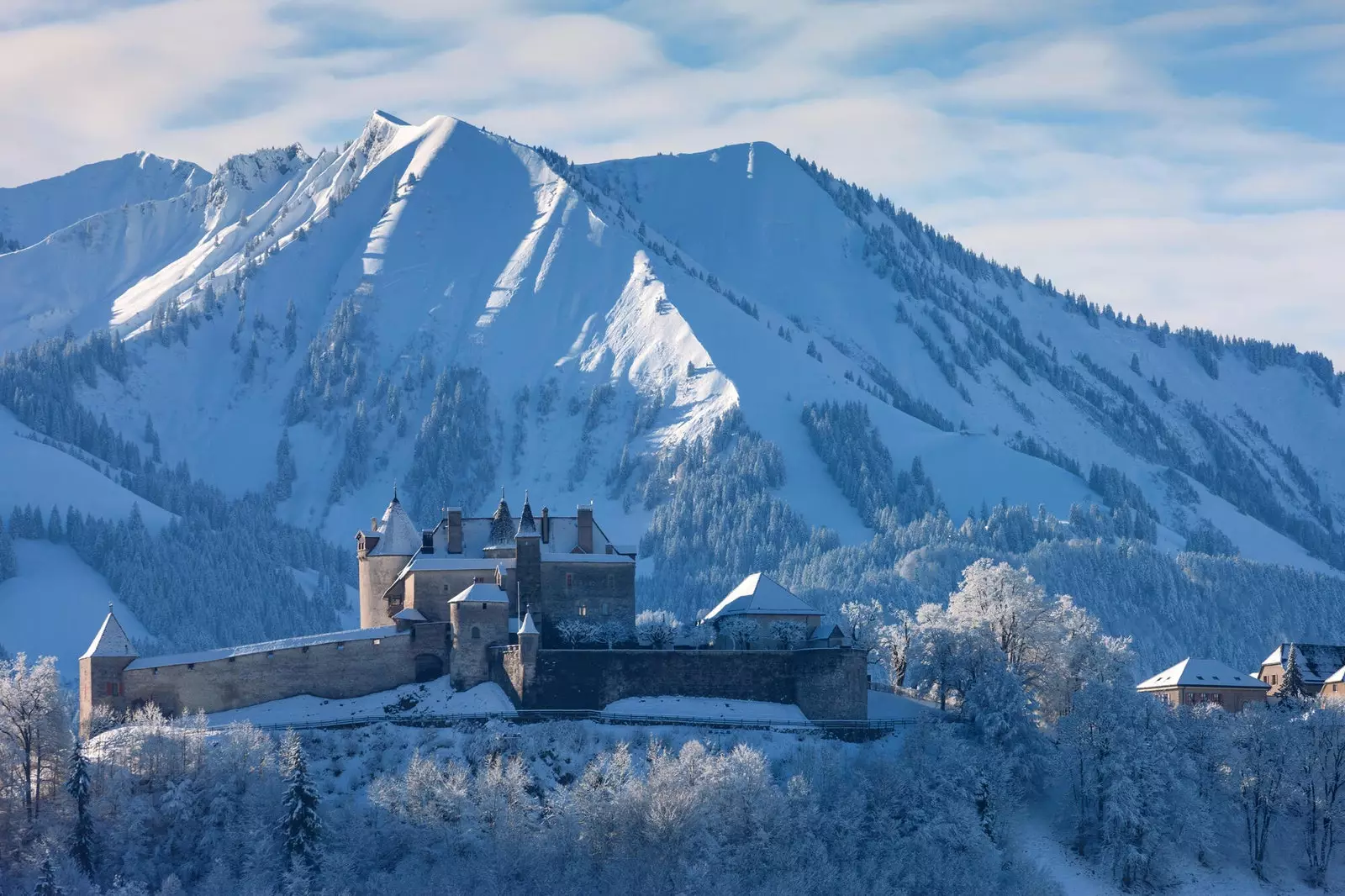
Gruyères Castle is one of the most beautiful and popular castles in Switzerland.
The Counts of Gruyere settled in the canton of Friborg at the beginning of the 9th century, giving name and one of the most beautiful castles from the country to Gruyères. Inhabited for centuries, it is worth going up to this jewel located at an altitude of 830 metres, which presides over the ornate town of medieval houses to which it has given its name.
In love with its views and having visited the museum inside, it's time to go down to the town to enjoy the peace of the streets of Gruyères and the interesting collection of museums it houses: House Caller (the chocolate museum factory), the cheese factory Maison du Gruyère… Y Alien.
Without a doubt, stopping to discover the H.R. Giger Museum, located in the castle of Saint Germain, where Swiss graphic artist and sculptor Hans Ruedi Giger , better known as Giger, founded this curious museum dedicated to the film saga, he deserved a few words.
Returning to the cheese, under the summit of Molèson, which in winter becomes the largest ski resort in the area, are the more than 160 dairies where Le Gruyère AOP is made . In the demonstration cheese factory, La Maison du Gruyere , the secrets of this cheese without holes, 100% natural and whose recipe has been passed down from generation to generation for more than 900 years, are revealed. And of course, the best part is not missing: the tasting.
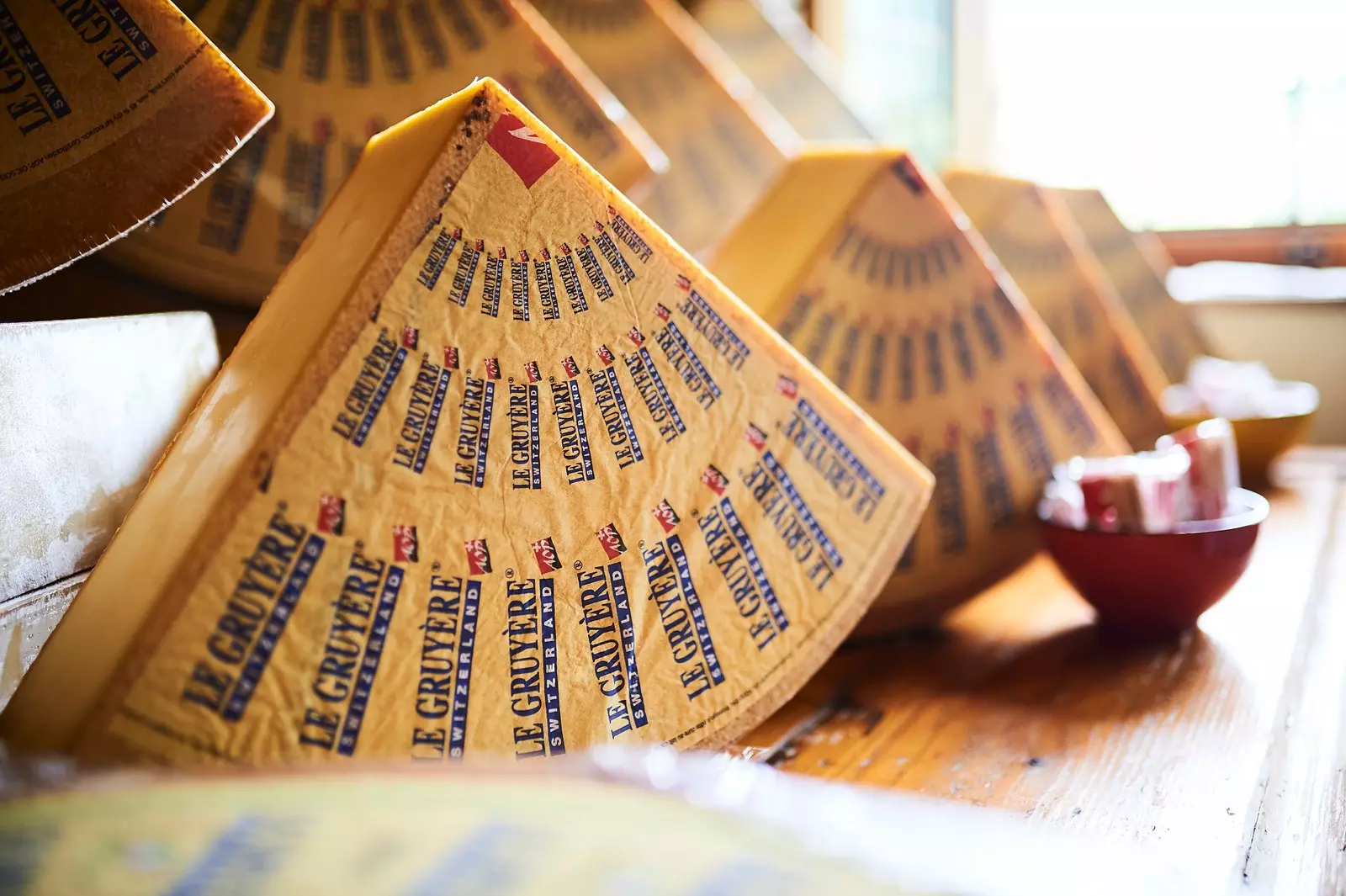
Le Gruyère, the most iconic cheese without holes in the country.
THE WILD JURA AND TÊTE DE MOINE CHEESE
A little further north, nature becomes the absolute protagonist with the Altiplano de the Franches Montagnes . Welcome to Canton of Jura and to the paradise of lovers of outdoor activities.
Excursions on foot, on horseback, by bicycle, on the water, in a horse-drawn caravan, cross-country skiing and snowshoeing are some of the activities that can be enjoyed in the region of the famous and delicious Tête de Moine AOP cheese , a place that fascinates with its picturesque, primitive and peculiar landscape, full of stops for active tourism.
Because in addition to the aforementioned plateau, they expect the Clos du Doubsm nature reserve , which rises between streams and mountains, and the incredibly green plains of Ajoie. In this last area, stop at the old medieval citadel Saint-Ursanne it will always be a hit. Legend has it that this small town was founded by the Irish monk Ursicinus , who lived as a hermit in this isolated corner of the earth whose magnetism is still especially alive.
medieval buildings, bourgeois houses built between the 14th and 16th centuries and an impressive collegiate church erected between the 12th and 14th centuries coexist with a magical cavern which is accessed by a steep staircase of 190 steps, and the ruins of a castle.
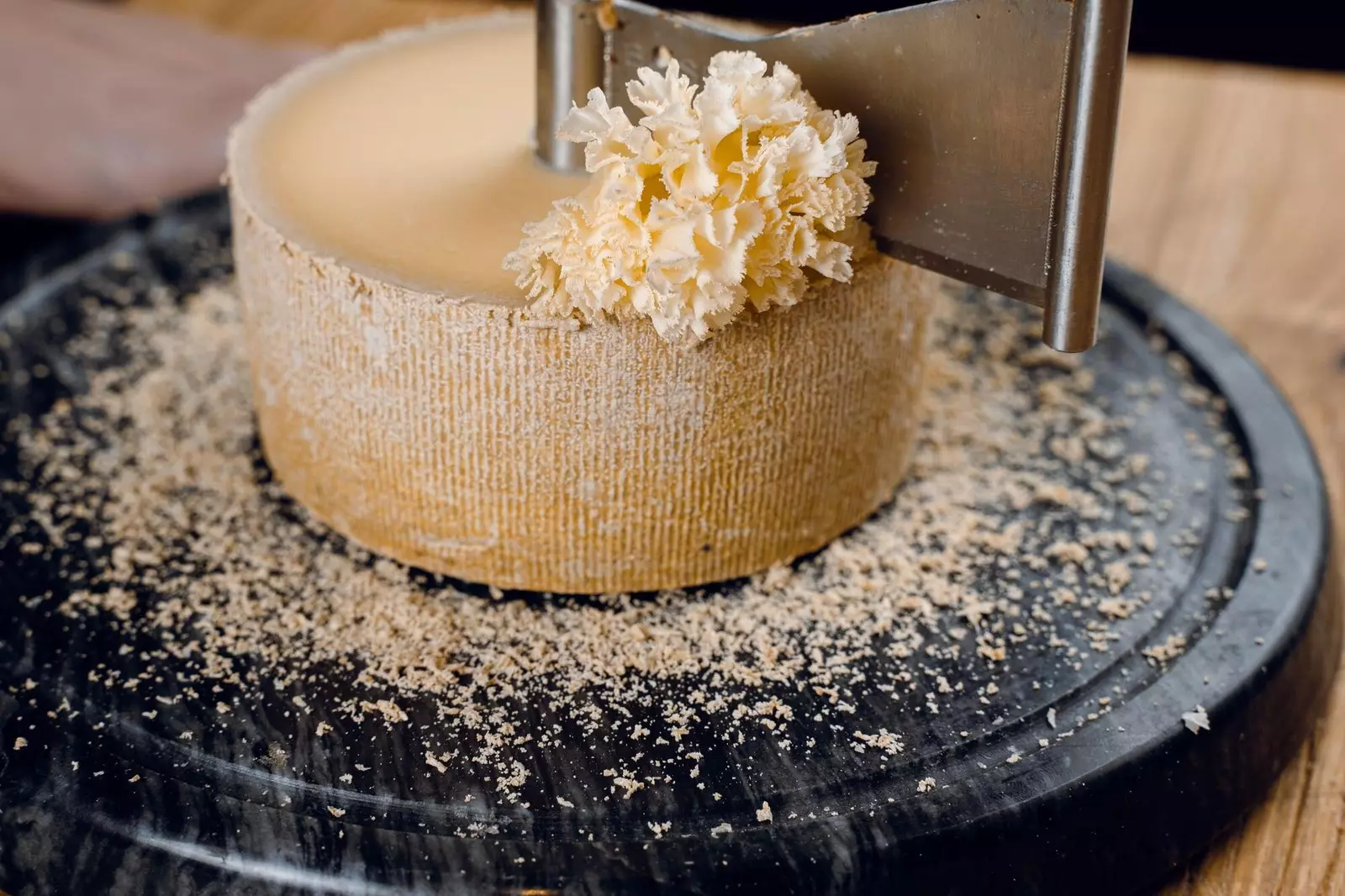
The way to cut the Tête de Moine in flower is a work of art.
Continuing with the populations, the region becomes especially urbanite in Delémont , the capital of the Canton of Jura, with its museums, galleries and churches; but Porrentruy, the historic capital of the canton , is still considered the cultural center of the region.
Its old town, with baroque, gothic and neoclassical bourgeois houses They invite you to travel to another time among churches whose windows are a unique phenomenon in Europe. And it is that the inhabitants of the Jura have created in less than half a century an authentic open-air art museum that offers the largest concentration of modern glass paintings in Europe.
Of course one cannot leave here without indulging in the delicious Tête de Moine AOP , which has been produced in this region for more than 800 years. Indispensable to visit the Maison de la Tete de Moine, in Bellelay, mythical demonstration cheese factory of this very special variety with a pure and aromatic flavour. A high note of salt is awakened when it is cut in the shape of a flower that only seven village cheese dairies and two farm dairies continue to make in an artisanal way.
EMMENTAL: THE SWISS KING
It was taking a while to show up, but the idyllic Emmental region could not miss on this cheese route. Although the product has crossed borders, This is one of the less touristy areas of Switzerland.
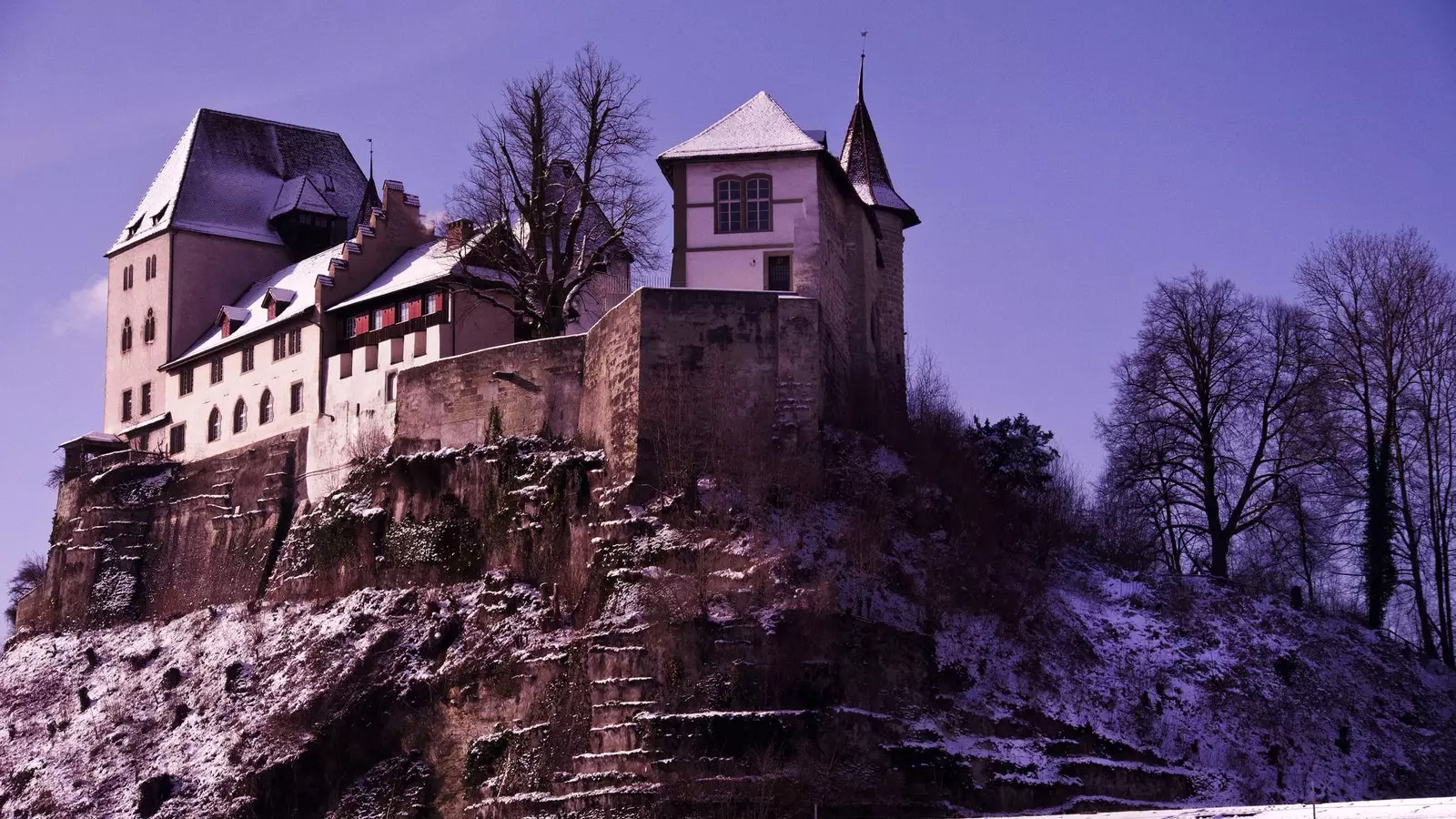
Burgdorf Castle, a fairytale setting.
What to find here? a ski morning in the background on its 10 km circular track, hiking , Nordic walking, panning for gold, Golf , the horse riding , the pottery or the cycling are just some of the suggestions.
After, nothing like getting lost in the small town of Burgdorf , at the entrance to the Emmental valley, which has an idyllic medieval quarter with an impressive 13th century castle where to spend the afternoon. Culture vultures will find their perfect stop at the Franz Gertsch-Museum if you are looking for swiss contemporary art.
In addition to dropping by some manufacturer of alpine horns and some other idyllic farm, the cheese factory Emmentaler Shaukäserei invites you to discover all the secrets of the "king of cheese", the Emmentaler AOP , known for its holes and brewed since the 13th century from raw milk of cows They graze freely and feed only on grass and hay.
APPENZELLERLAND: TYPICALLY ALPINE VILLAGE
We headed northwest to conclude our cheese route in Appenzellerland, one of the most traditional and special areas of Switzerland. With just over 7,000 inhabitants, this town with a pedestrianized urban area still maintains a typical alpine village architecture.
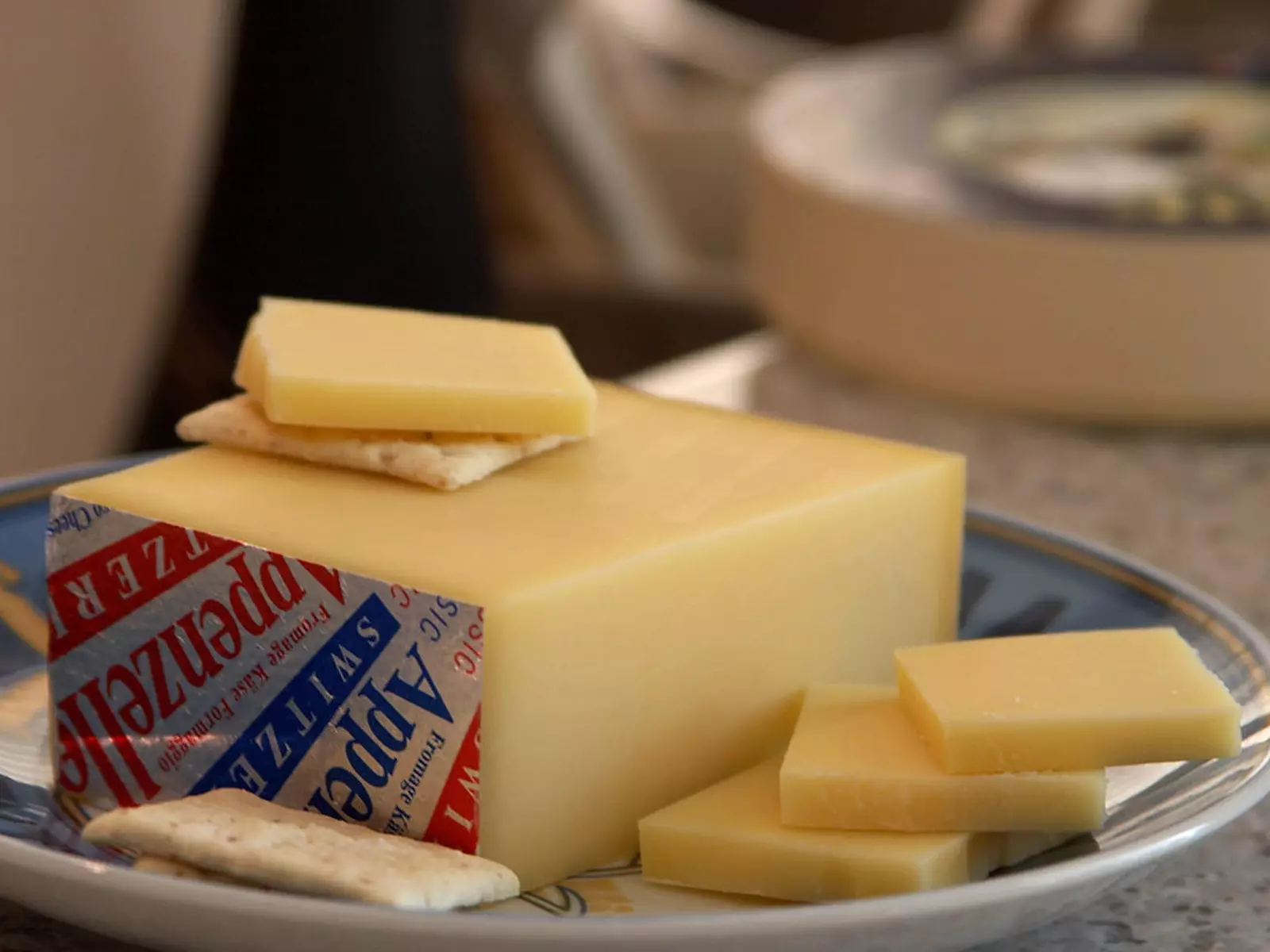
Appenzeller, the most aromatic and mysterious cheese from Switzerland.
Distinctive feature of the city are the exterior frescoed painted houses and obligatory stops are the Appenzell castle, the Heiligkreuzkapelle church or the Appenzell art museum , whose traveling exhibitions show different aspects of the work of painters Carl August Liner (1871-1946) and Carl Walter Liner (1914-1997), as well as 20th-century and contemporary art.
But also, Appenzeller is ideal for lovers of hiking , as it has a particularly dense network of trails for hikers and is the starting point for the route to the peak of the Säntis , as well as fans of hang gliding and skiing. In fact, there is no better icing on the cake than travel by cable car from Wasserauen to Ebenalp (1,644m).
To forget about the cold outside, at the iconic Stein cheese factory awaits a masterclass on the craftsmanship of Appenzeller, the most aromatic and mysterious cheese from Switzerland , because its unique spicy flavor is due to a brine of herbs, whose composition is a strictly kept secret and the perfect closure for this trip.
